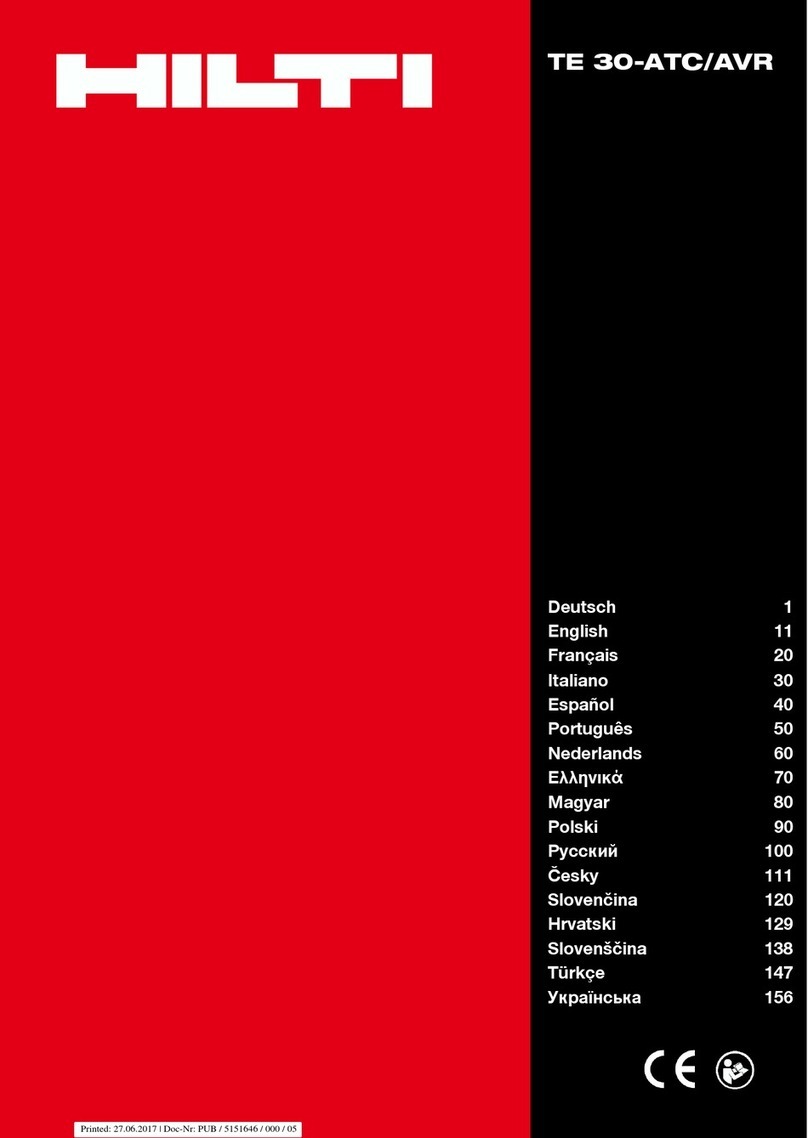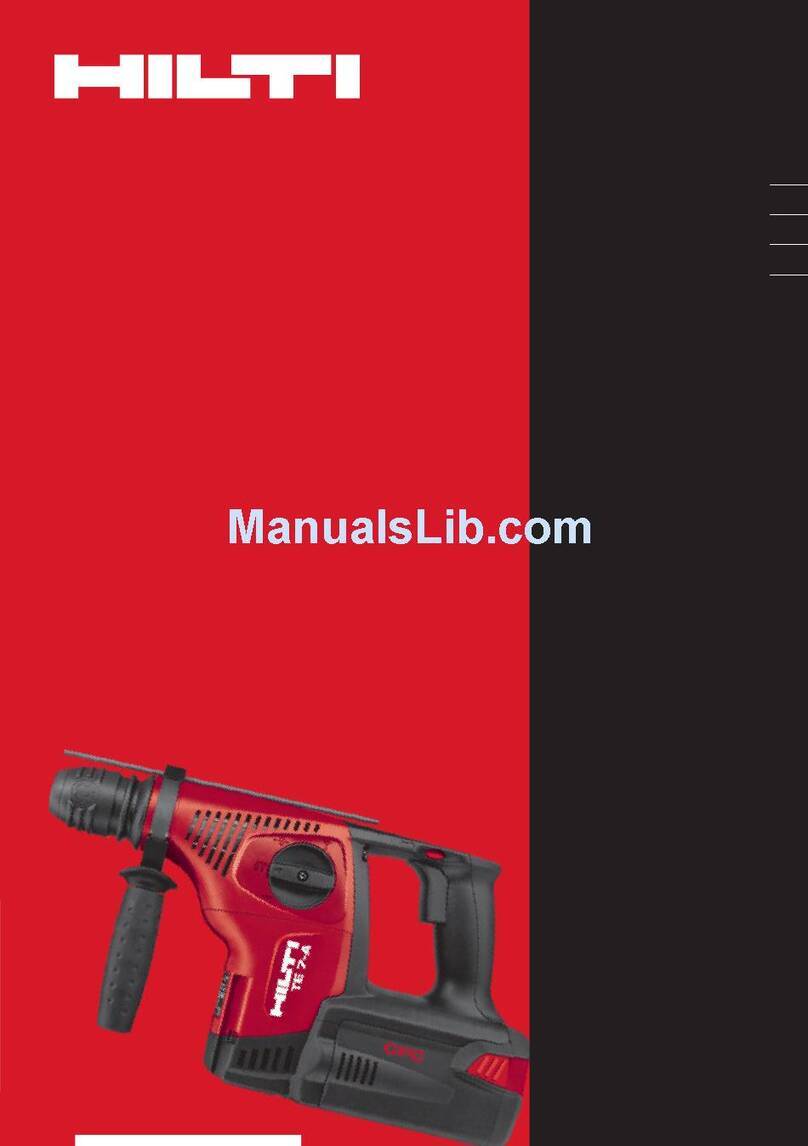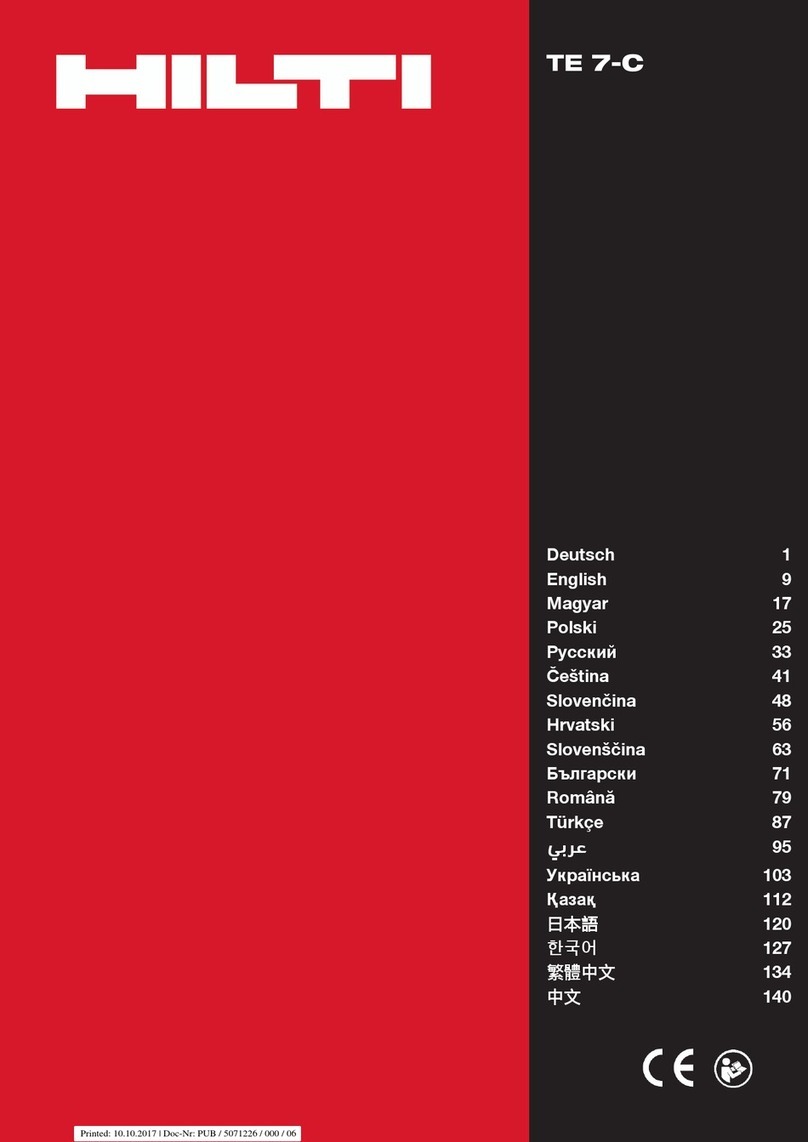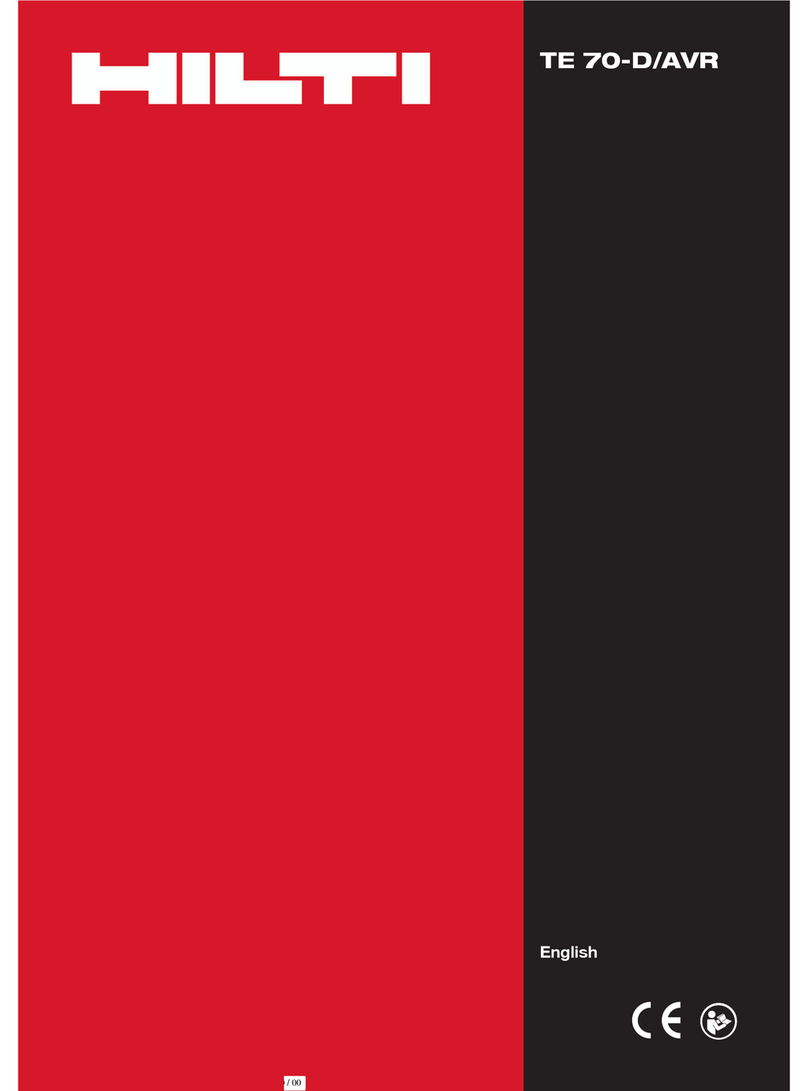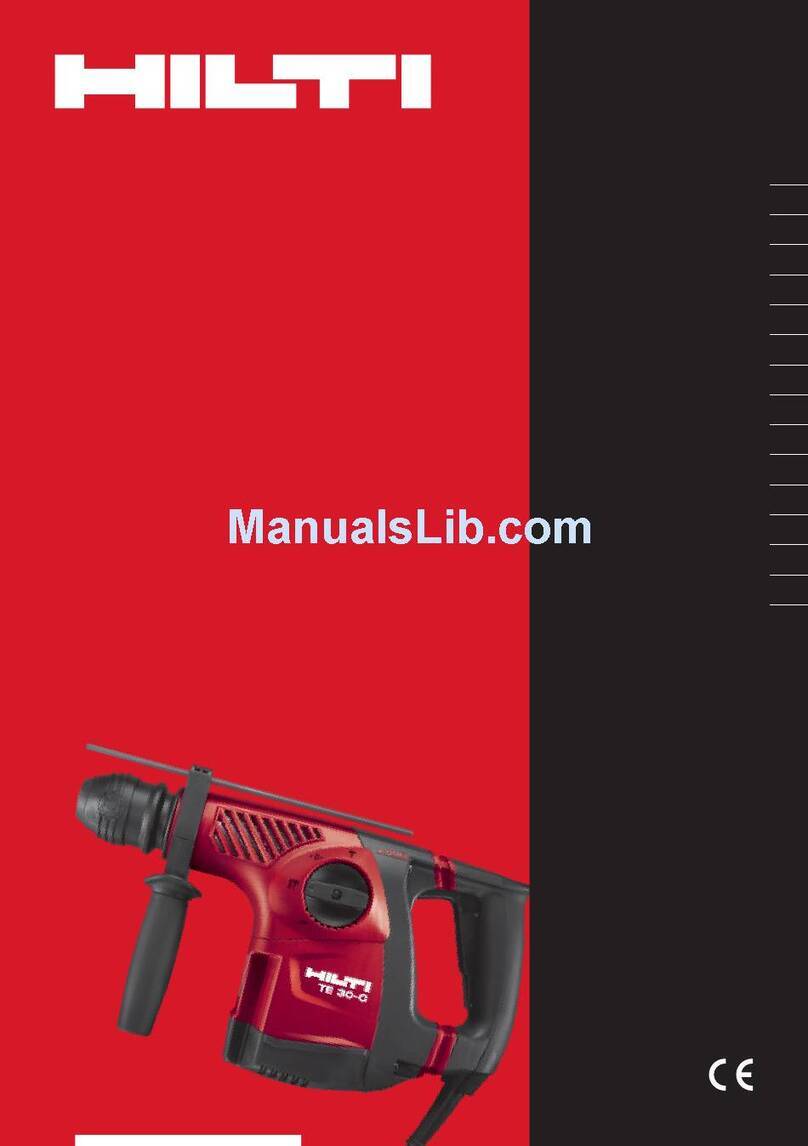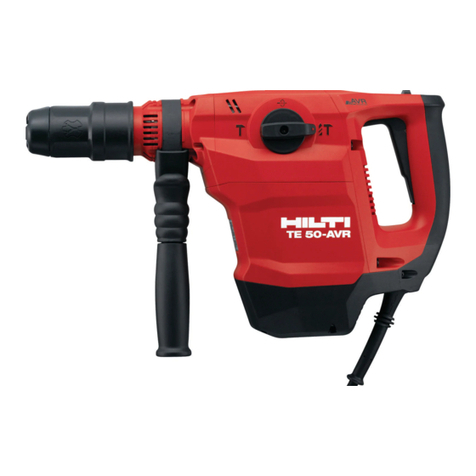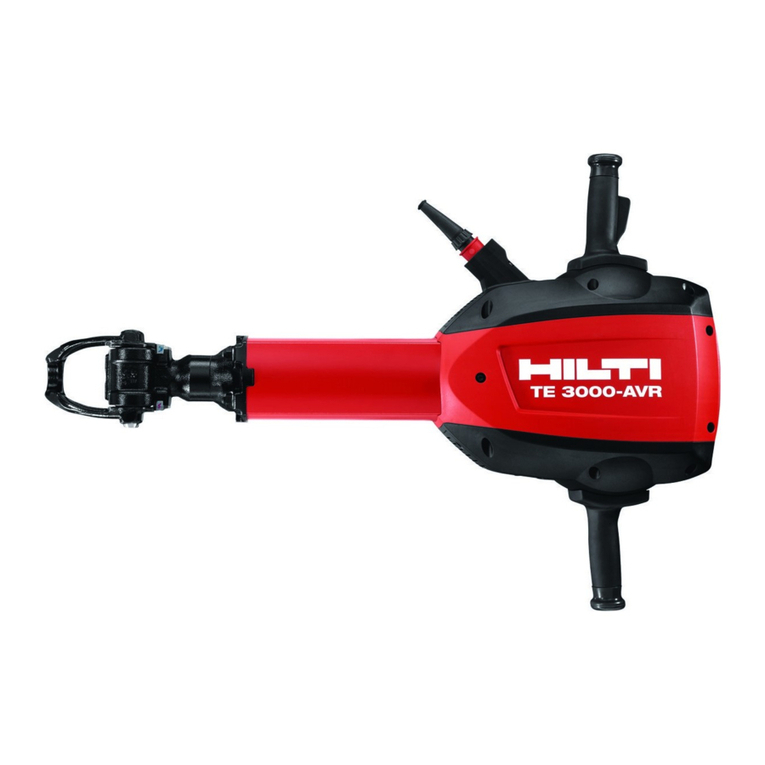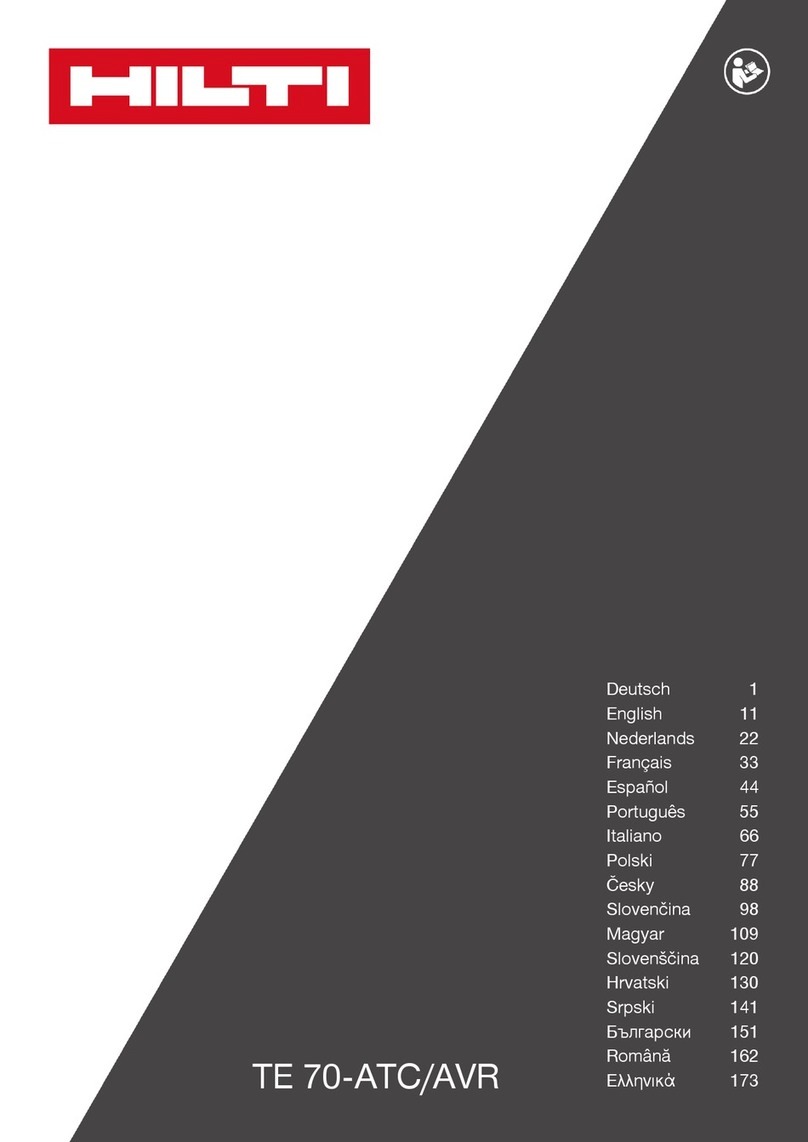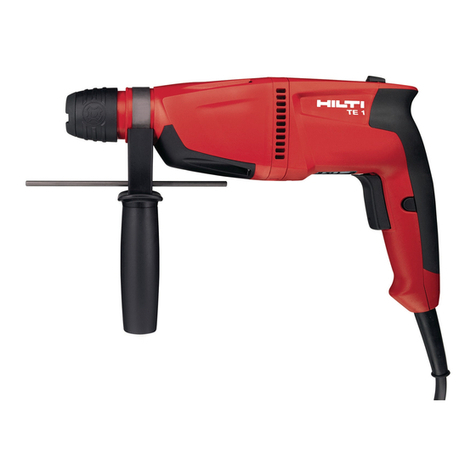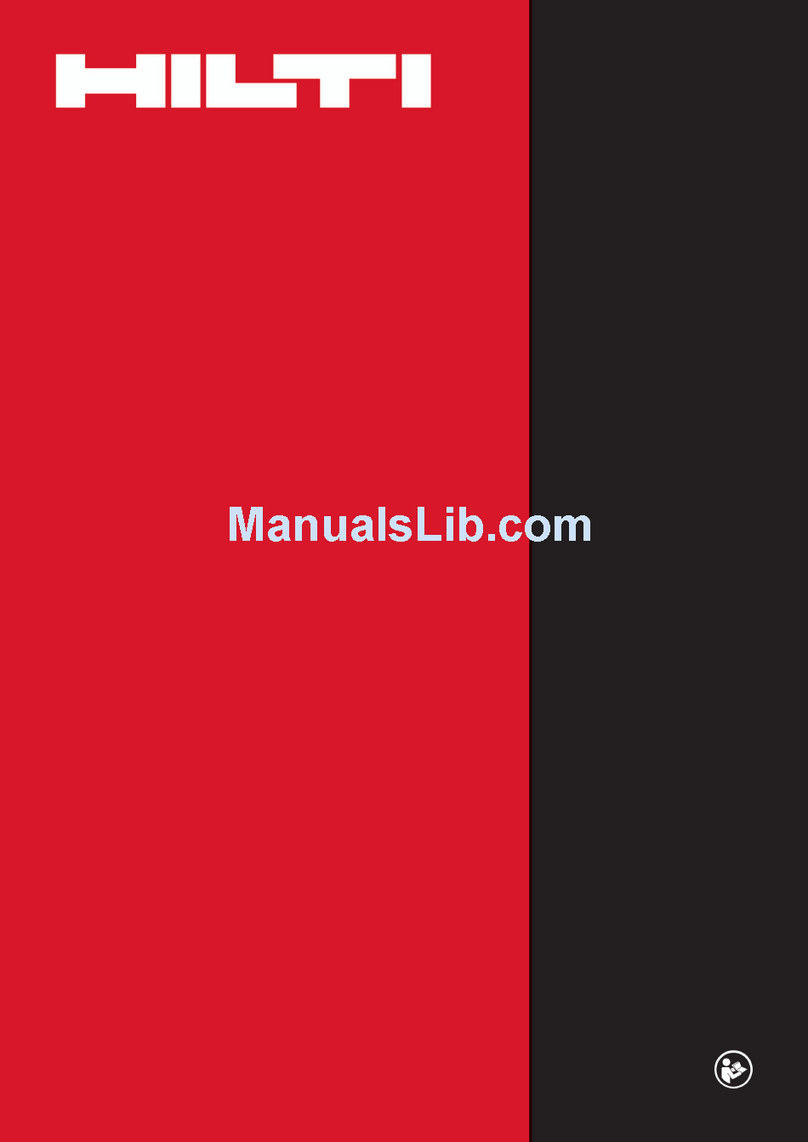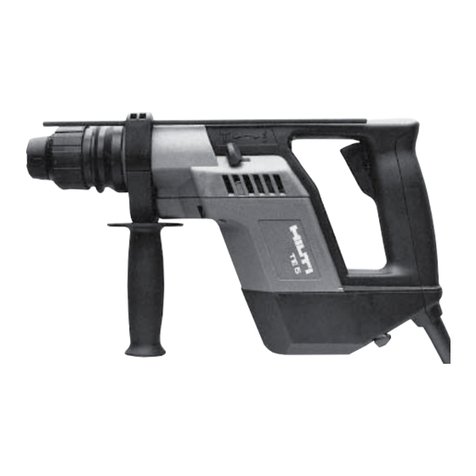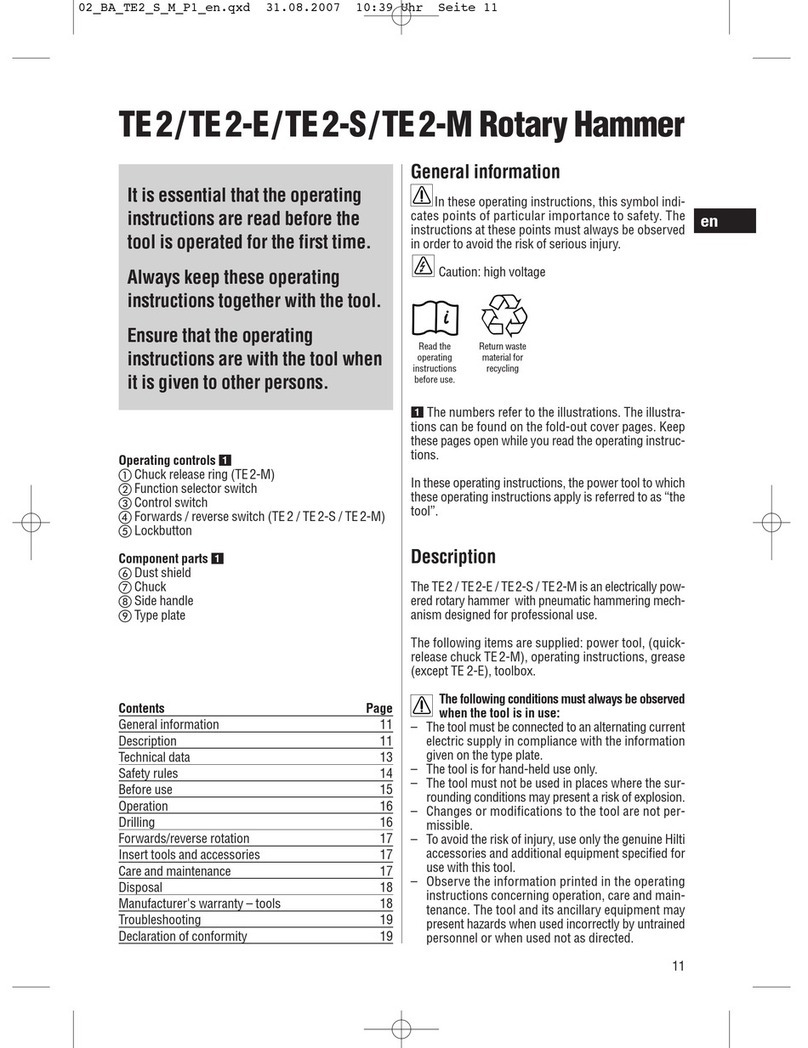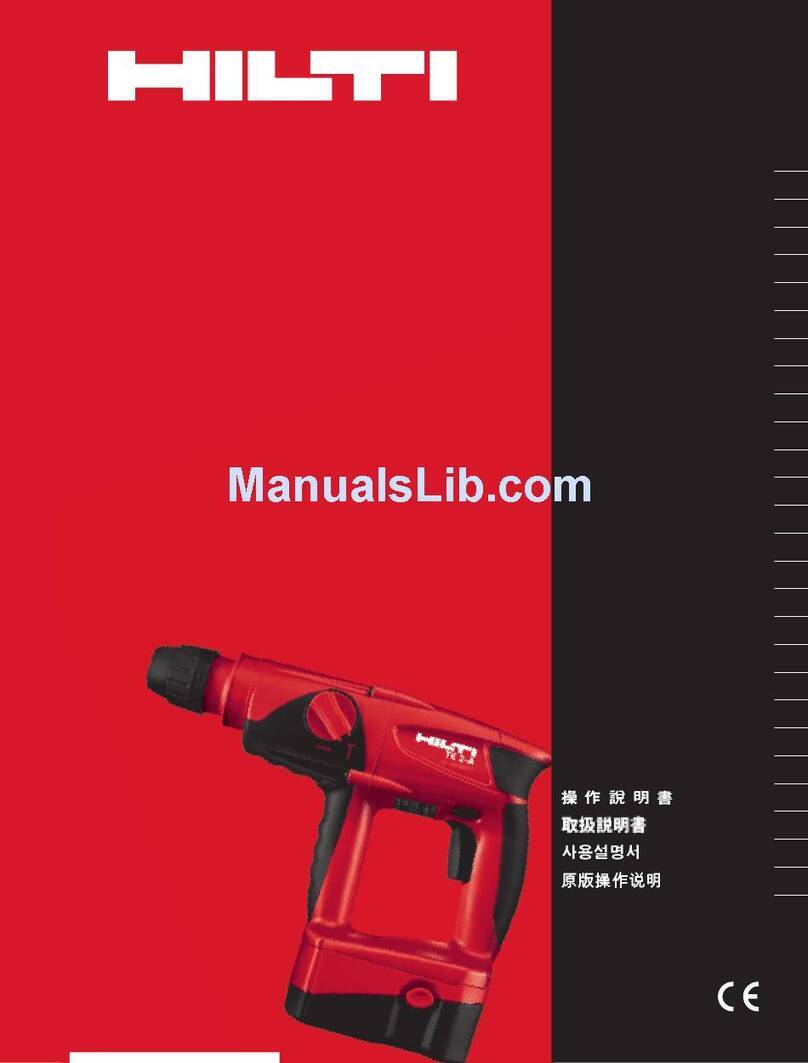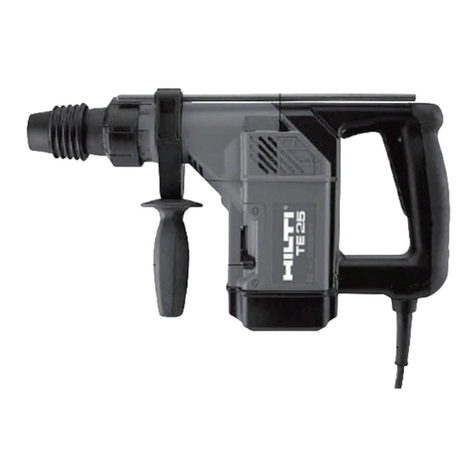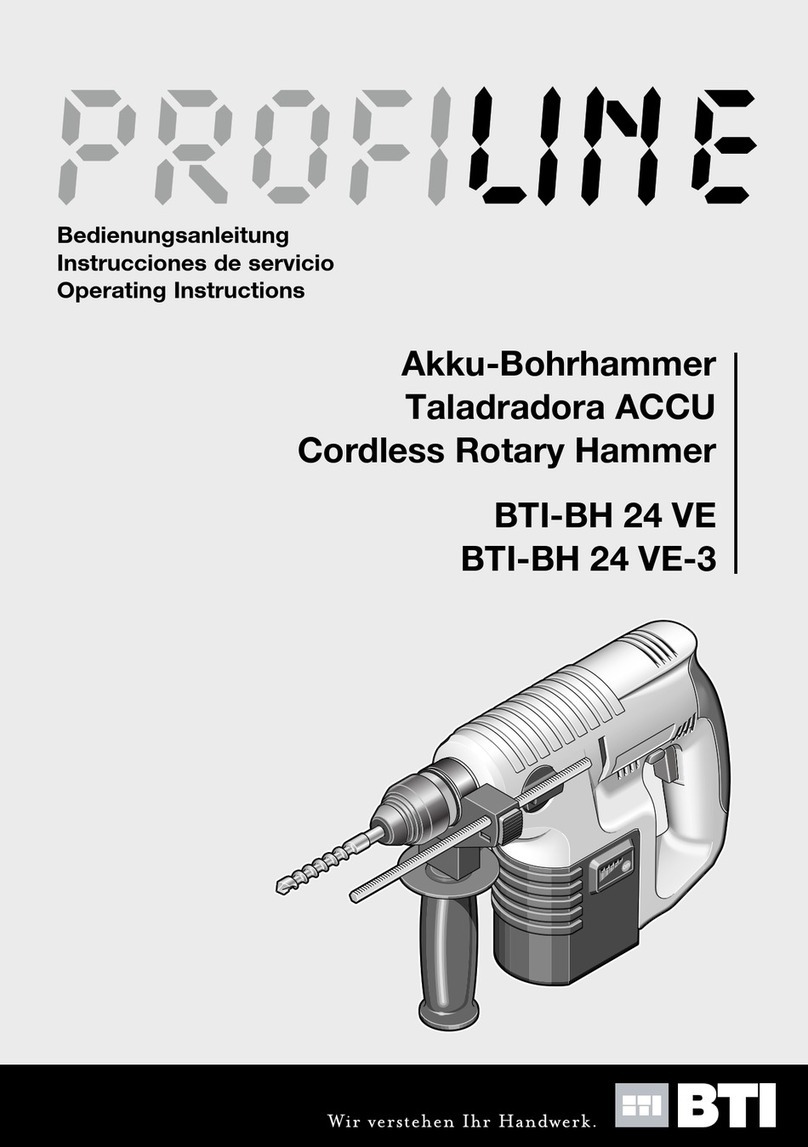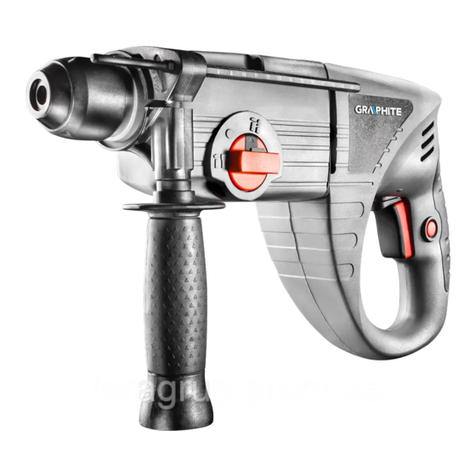4
en
c) Use power tools only with specifically designated
battery packs. Use of any other battery packs may
create a risk of injury and fire.
d) When battery pack is not in use, keep it away from
other metal objects like paper clips, coins, keys,
nails, screws, or other small metal objects that
can make a connection from one terminal to anoth-
er. Shorting the battery terminals together may
cause burns or a fire.
e) Under abusive conditions, liquid may be ejected
from the battery, avoid contact. If contact acci-
dentally occurs, flush with water. If liquid contacts
eyes, additionally seek medical help. Liquid eject-
ed from the battery may cause irritation or burns.
1.6 Service
a) Have your power tool serviced by a qualified repair
person using only identical replacement parts.
This will ensure that the safety of the power tool is
maintained.
2 Additional safety precautions
2.1 Personal safety
a) Wear ear protectors. Exposure to noise can cause
hearing loss.
b) Use auxiliary handles supplied with the tool. Loss
of control can cause personal injury.
c) Prevent unintentional starting. Ensure the switch
is in the off-position before connecting to power
source and/or battery pack, picking up or carrying
the tool. Carrying power tools with your finger on
the switch or energising power tools that have the
switch on invites accidents.
d) Always hold the tool securely with both hands on
the grips provided. Keep the grips clean, dry and
free from oil and grease.
e) Adjust the side handle to the desired position and
check that it is fitted and secured correctly.
f) Avoid contact with rotating parts. Switch the tool
on only once it has been brought into the work-
ing position close to the workpiece.
g) Avoid unintentional starting. Do not carry the tool
with your finger on the on/off switch. The forwards
/ reverse / transport lock switch should be brought
into the transport lock position (middle position)
when the tool is not in use, e.g. during pauses
between work, before maintenance, when chang-
ing insert tools and during transport.
h) Breathing protection must be worn when the tool
is used without a dust removal system for work
that creates dust.
i) Operate the tool only as directed and only when
it is in faultless condition.
j) Exercise your fingers during pauses between work
to improve the blood circulation in your fingers.
k) Children must be instructed not to play with the
tool.
l) The tool is not intended for use by children,by
debilitated persons or those who have received
no instruction or training.
m) WARNING: Some dust created by grinding, sand-
ing, cutting and drilling contains chemicals known
to cause cancer, birth defects, infertility or other
reproductive harm; or serious and permanent res-
piratory or other injury. Some examples of these
chemicals are: lead from leadbased paints, crys-
talline silica from bricks, concrete and other mason-
ry products and natural stone, arsenic and chromi-
um from chemicallytreated lumber. Your risk from
these exposures varies, depending on how often you
do this type of work. To reduce exposure to these
chemicals, the operator and bystanders should
work in a well-ventilated area, work with approved
safety equipment, such as respiratory protection
appropriate for the type of dust generated, and
designed to filter out microscopic particles and
direct dust away from the face and body. Avoid pro-
longed contact with dust. Wear protective cloth-
ing and wash exposed areas with soap and water.
Allowing dust to get into your mouth, eyes, or to
remain on your skin may promote absorption of
harmful chemicals.
2.2 Power tool use and care
a) Secure the workpiece. Use clamps or a vice to hold
the workpiece in place. The workpiece is thus held
more securely than by hand and both hands remain
free to operate the tool.
b) Ensure that the insert tools used are equipped with
the appropriate connection end system and that
they are properly fitted and secured in the chuck.
2.3 Electrical safety
a)Before beginning work, check the working area (e.g.
with a metal detector) to ensure that no concealed
electric cables or gas and water pipes are present.
External metal parts of the tool may become live if,
for example, an electric cable is damaged inadvertenly.
This presents a serious risk of electric shock.
2.4 Work area
a) Ensure that the workplace is well lit.
b) Ensure that the workplace is well ventilated.Poor-
ly ventilated workplaces may be injurious to the
health due to exposeure to dust.
2.5 Personal protective equipment
The user and any other persons in the vicinity must
wear suitable eye protection, a hard hat, ear protection
and protective gloves when the tool is in use. Breath-
ing protection must be worn if no dust removal sys-
tem is used.
Wear ear
protection Wear
protective
gloves
Wear
breathing
protection
Wear eye
protection Wear a
hard hat
Printed: 07.07.2013 | Doc-Nr: PUB / 5071062 / 000 / 00
